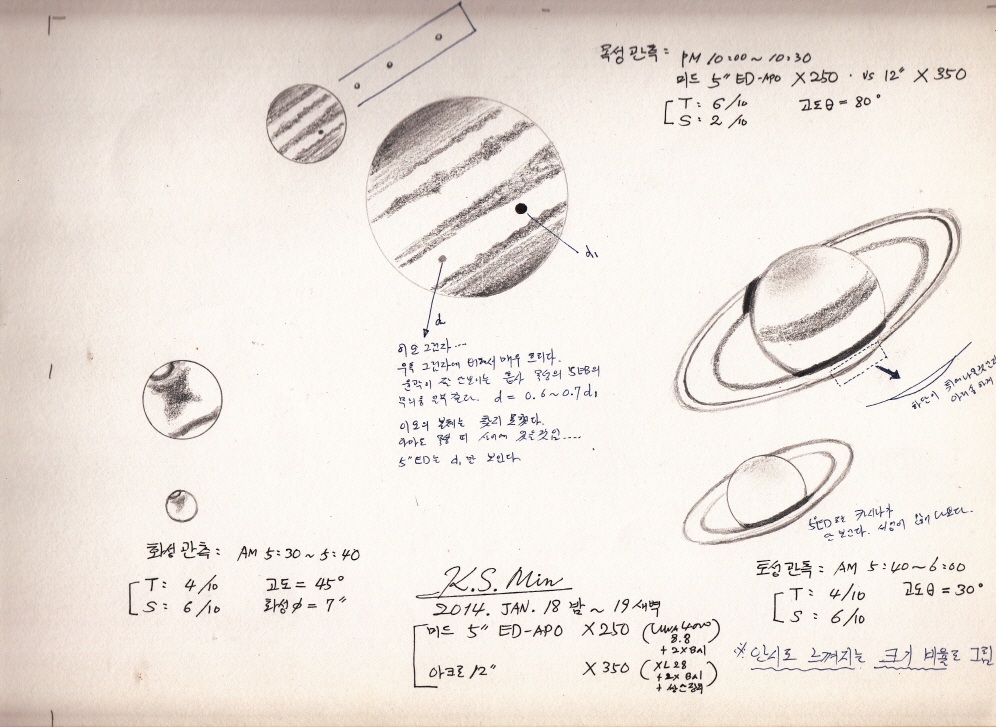
5″ f9 refractor, x240 ]
12″ f10 efractor x350
location ; Backyard home in South. Korea
white paper [40 x30 cm] , graphite pencils , black ink
Date of observe/ sketch ; jan, 18. 2014.
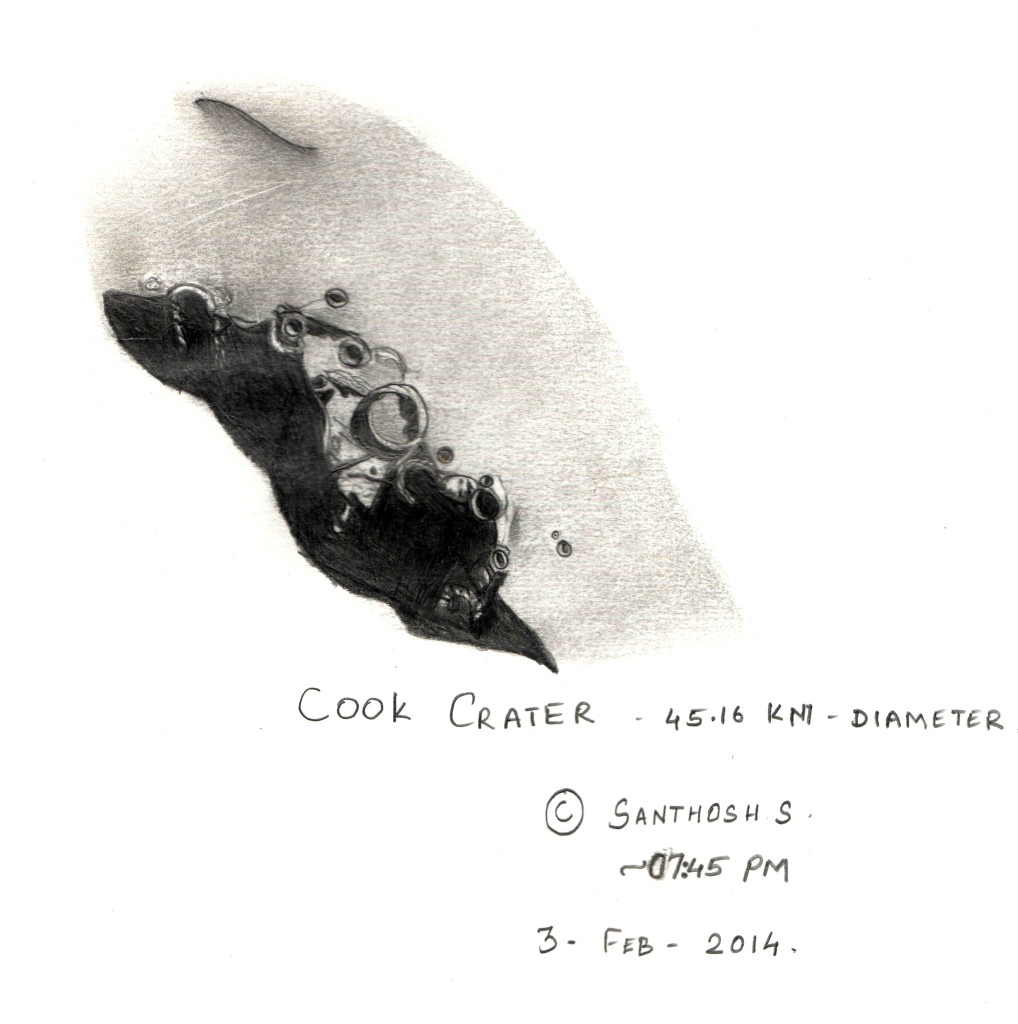
Object-Cook crater, Moon
Type-Crater
Location-Bangalore, India
Date-3-Feb-2014
Media-0.7mm click pencil, eraser, Processed with PS5…
Seeing condition-Average from city.
Instrument- Sky130mm f6.9Newtonian and Ioptron SmartEQ portable GEM.. 6mm eyepiece…
Hi guys, I sketched this after few weeks… I used Blade to whiten the crater borders….
Regards,
Santhosh S
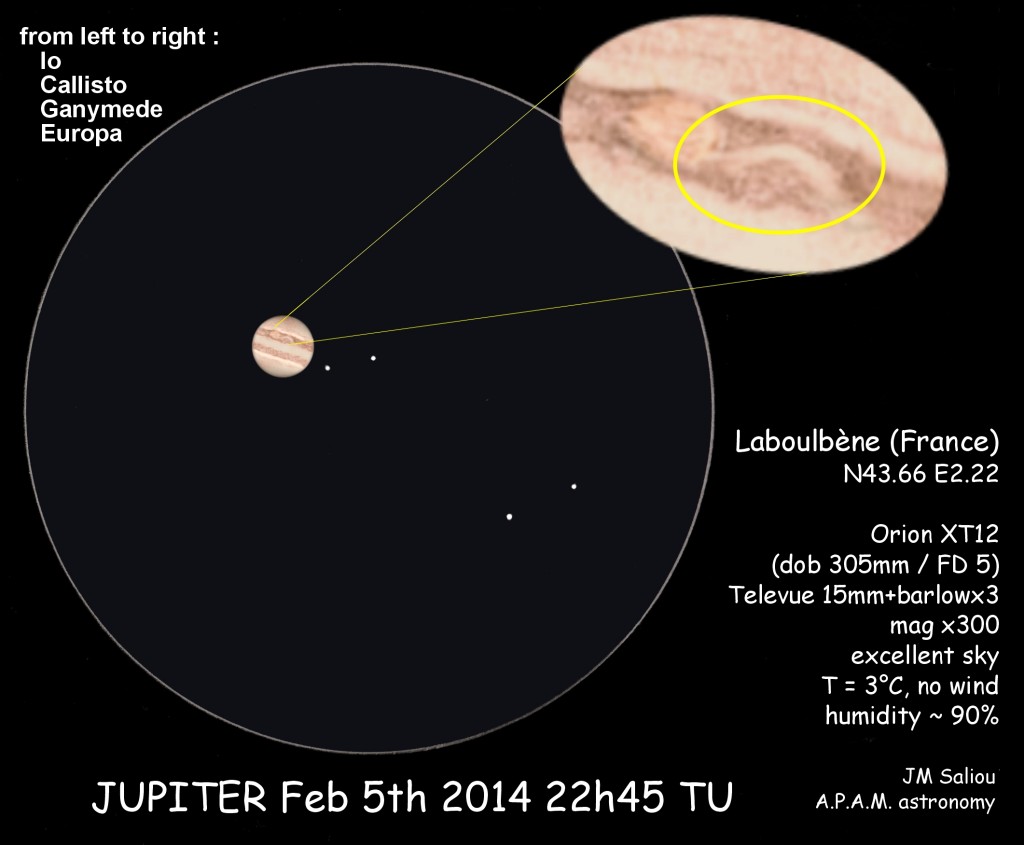
* Object Name: Jupiter
* Object Type: planet
* Location: Laboulbène (Tarn – France) N43.66 E2.22
* Date: 5th February 2014 22h45TU
* Media: pencil HB + 2B, white drawing paper, scanned + rescaled + colorized with PhotoPaint
Orientation: eyepiece view, no image flipping
Conditions: Lot of humidity, 3°C, no wind.
Equipment:
– Dobson Orion XT12 (305 x 1500mm => F/D 5)
– Eyepiece Panoptic 15mm + barlow x 3 Televue (mag x 300)
After a heavy rain, the sky suddenly went cristal clear. So I took my Dobson to a dark lane.
After having a long M82 supernova contemplation, I payed attention to Jupiter.
Its moons were in a rare configuration: all on the same side, but forming a trapeze instead of a line.
From left to right: Io, Callisto, Ganymede, Europa.
I was surprised by the amazing sky quality, seeing perfectly the Great Red Spot and some detail on tropical strips.
I saw an unusual white wave on the right side of the GRS I wanted to keep in memory by doing this sketch.
I could not establish if it was a continuous stream (as I draw it) or a suite of white storm clouds.
I did not find recent picture of Jupiter to confirm.
If somebody observed this, or made a picture at the same period, thanks for leaving a comment.
Thanks for your interest.
Jean-Marc Saliou
APAM astro club
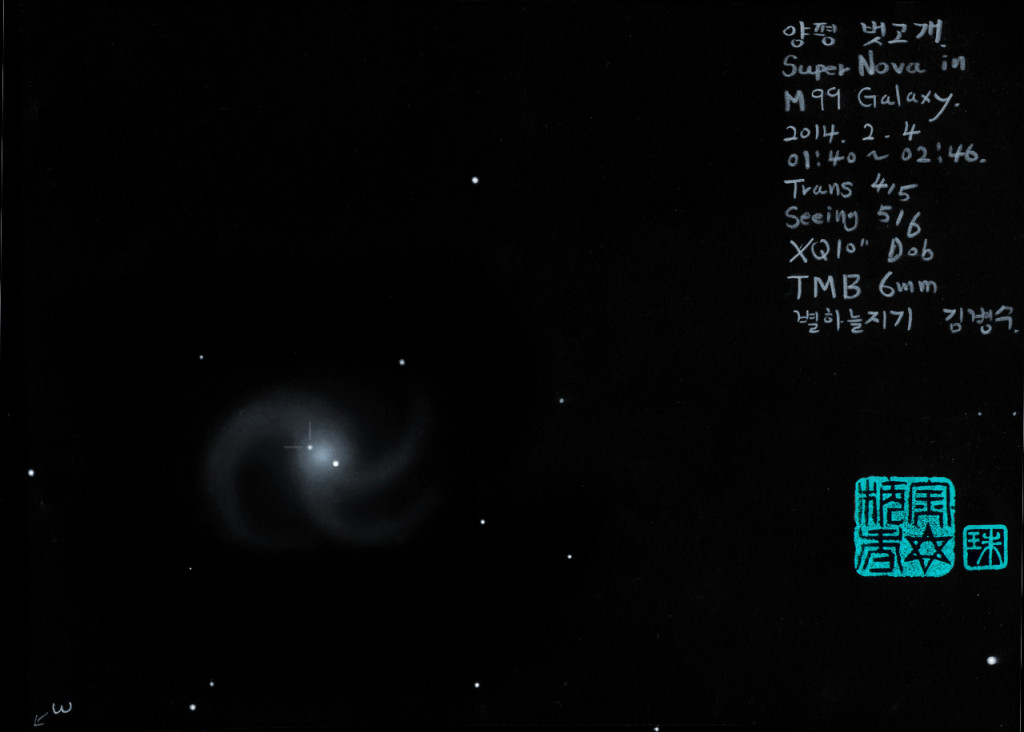
ASOD – Supernova in M99 sketch – “Kim byong su”
file name – “m99_supernova_Kim Byong su”
object Name – Supernova in M99 sketch
Location – But-gogae Gosong-ri Yangdong-myeon Yangpyeong-gun Gyeonggi-do S.KOREA
Media – pencil, charcoal , white Paper
XQ 10″ Dob / TMB 6mm “208x”
this sketch image 1280 pixel..
140x – Sharp => Looked for a short time(0.2~1.5 seconds)
208x – Cloudy Sharp=> Looked for a long time (2~3 seconds)
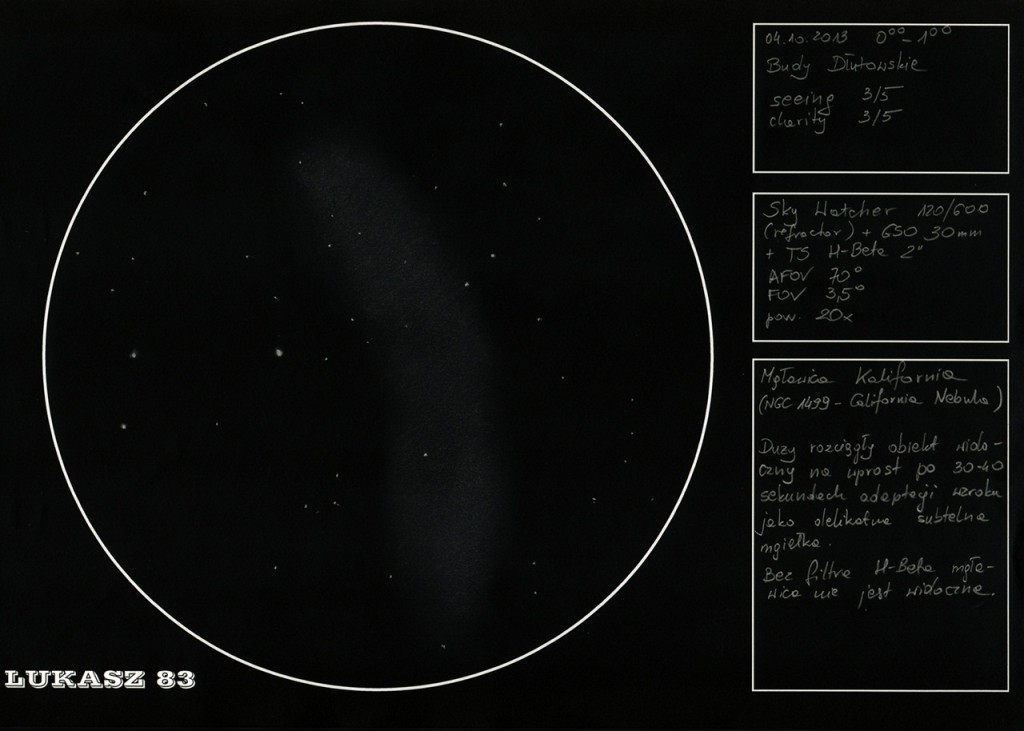
Object Name California Nebula in Perseus – NGC1499
Object Type emission nebula
Location Budy Dłutowskie – small village in central Poland
Date 04.10.2013
Media graphite pencil, white paper, color invert
Telescope Sky Watcher refractor 120/600 + GSO 30mm + TS H-Beta
Seeing 3/5 (medium)
Transparency 3/5 (medium)
NELM 5,5 mag
I heard that this object is extremely hard to observe (in visual, of course). That’s why i decided to try 🙂 I bought TS H-Beta filter which is essential during observations of this faint object.
And I can say, with this filter, nebula is quite easy and obvious to observe. It looks like delicate fog.
But you need rich-field telescope to catch it fully in one FOV – to be precise, minimum 3,5 degree of FOV is necessary. And of course H-beta filter, because without it you will see nothing.
Clear Sky
Łukasz
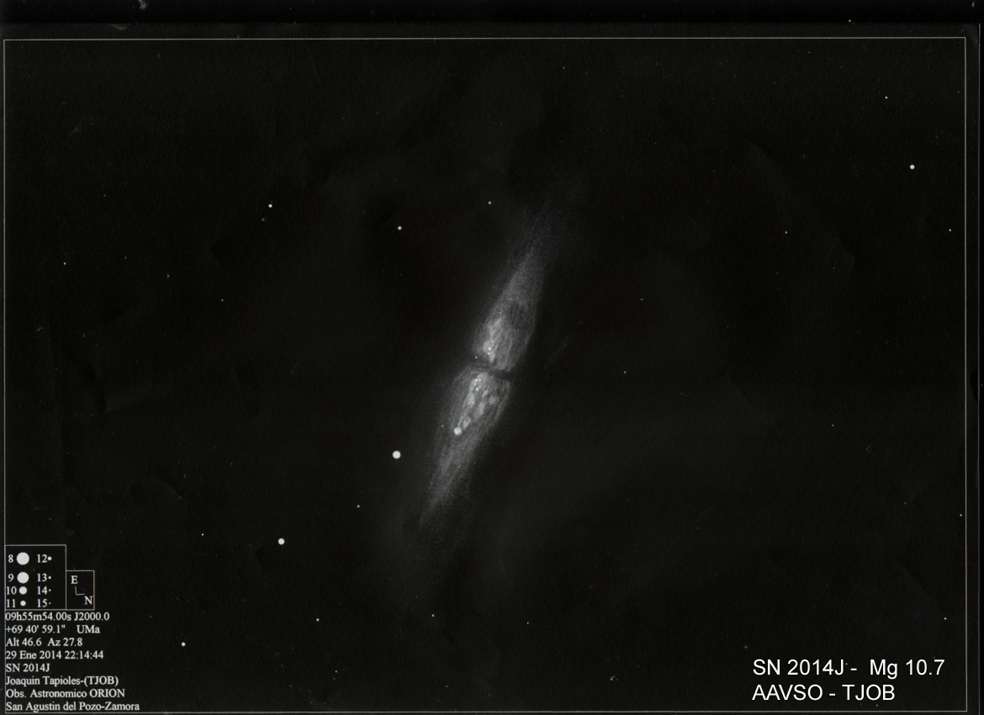
Nombre de objeto ( M82 y SN 2014J )
Tipo de objeto ( Galaxia con SN 2014J )
Ubicación (Observatorio Astronomico ORION)
Fecha ( 29-01-2014- 22:14 T.U )
Medios (lápiz de grafito, carboncillo sobre papel con carta estelar impresa de guide9.0 )
El dibujo se realizo en 1 hora usando un dobsom de 305mm F4.8 usando un ocular explorer cientific de 4.7mm ( 315 X )
La Mg en ese momento de la SN 2014J y que se puede ver en la AAVSO fue de Mg 10.7
SN 2014J 2456687.41682 2014 Jan. 29.91682 10.7 — Vis. TJOB
——————————————————————————————————————————————————————————
Object name (M82 and SN 2014J)
Object type (galaxy with SN 2014J)
Location (Observatorio Astronomico ORION)
Date (29-01-2014 – 22:14 T.U)
Media (graphite pencil, charcoal on paper with printed star chart of guide9.0)
The drawing was done in 1 hour using a 305mm F4.8 dobsom using an ocular explorer cientific 4.7mm (315 X)
The Mg at the time of the SN 2014J and you can see on the AAVSO was 10.7 Mg
SN 2014J 2456687.41682 29.91682 10.7 2014 Jan. – Vis. TJOB
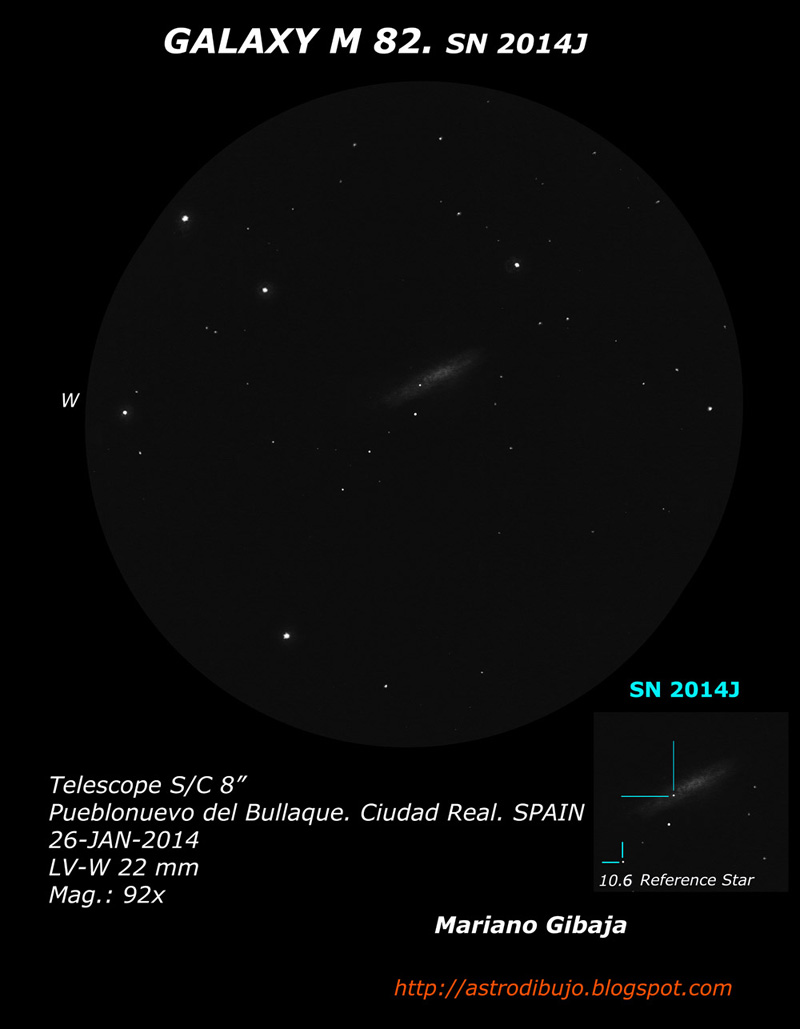
Object Name: M 82-SN 2014J
Location: RA: 09h 57m 03.3s, Dec: +69 ° 36 ’58 ”
Magnitude: 8.4
Dimensions: 9’ x 4’
Constellation: Ursa Major
Type: Irregular Galaxy. Type Ia supernova.
Observing Location: Pueblonuevo Bullaque, Ciudad Real
Date: January 26, 2014.
Time: 00:15 Local.
Material Used: Graphite pencil on white paper. Reversed Image processed with Photoshop.
Celestron Telescope S/C 8″ Mount Cgt-5
Eyepiece: Vixen LV-W 22 mm Magnification: 92x.
More information: http://astrodibujo.blogspot.com.es/
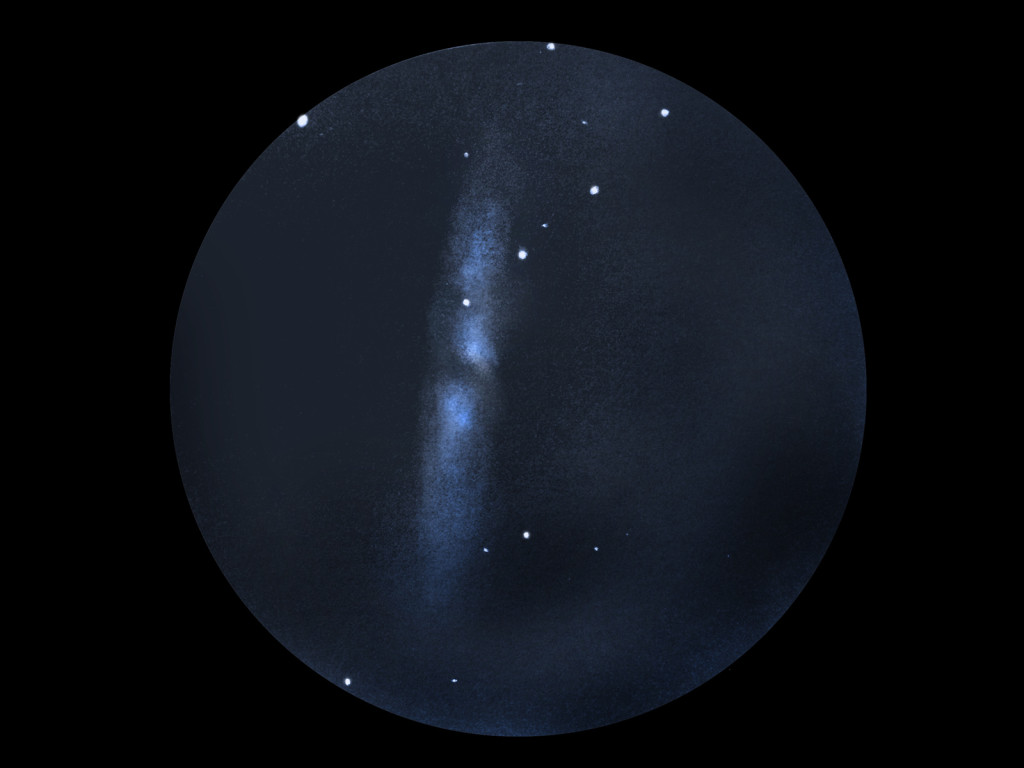
Spectacular view of the supernova in M82 on the night of January 25, 2014
Scketch made at La Hita´s Observatory in La Puebla de Almoradiel, Toledo (Spain).
22:18 UT
With graphite on white paper, looking through TEDI telescope (770 mm, f3.2 ) eyepiece 13mm and the red light of my torch (I call it “the demon” by its two red eyes).
The sky was really clear and pristine, relative humidity 80%. (4.5ºC)
Close to new Moon. My estimate Mag with reference stars is 10.5
Regards
Leonor